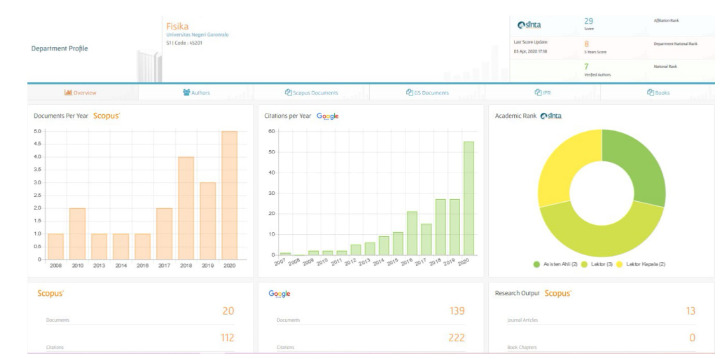Physics Education Study Program took part as one of the main contributors to increasing the indexation ranking of publications at UNG. Therefore, the Head of the Physics Department continues to appreciate and motivate the academic community, not only for lecturers but also for students to conduct research based on the output of scientific article publications. This can be seen on the SINTA portal (Science and Technology Index) > Department > UNG Physics, where the number of articles and the number of citations for Scopus and Google Scholar continues to increase from year to year (2008 to 2022). For researchers and lecturers to be registered at SINTA, there are three stages, namely (1) registration, (2) verification, and (3) synchronization. Synchronization is copying existing articles or publications in the data source against the existing system. In this case, the data source is the Scopus database, and the SINTA website database is the system that holds the synchronized data. The synchronized data is the number of publications and citations to those publications.

Physics Education Study Program took part as one of the main contributors to increasing the indexation ranking of publications at UNG. Therefore, the Head of the Physics Department continues to appreciate and motivate the academic community, not only for lecturers but also for students to conduct research based on the output of scientific article publications. This can be seen on the SINTA portal (Science and Technology Index) > Department > UNG Physics, where the number of articles and the number of citations for Scopus and Google Scholar continues to increase from year to year (2008 to 2022). For researchers and lecturers to be registered at SINTA, there are three stages, namely (1) registration, (2) verification, and (3) synchronization. Synchronization is copying existing articles or publications in the data source against the existing system. In this case, the data source is the Scopus database, and the SINTA website database is the system that holds the synchronized data. The synchronized data is the number of publications and citations to those publications.